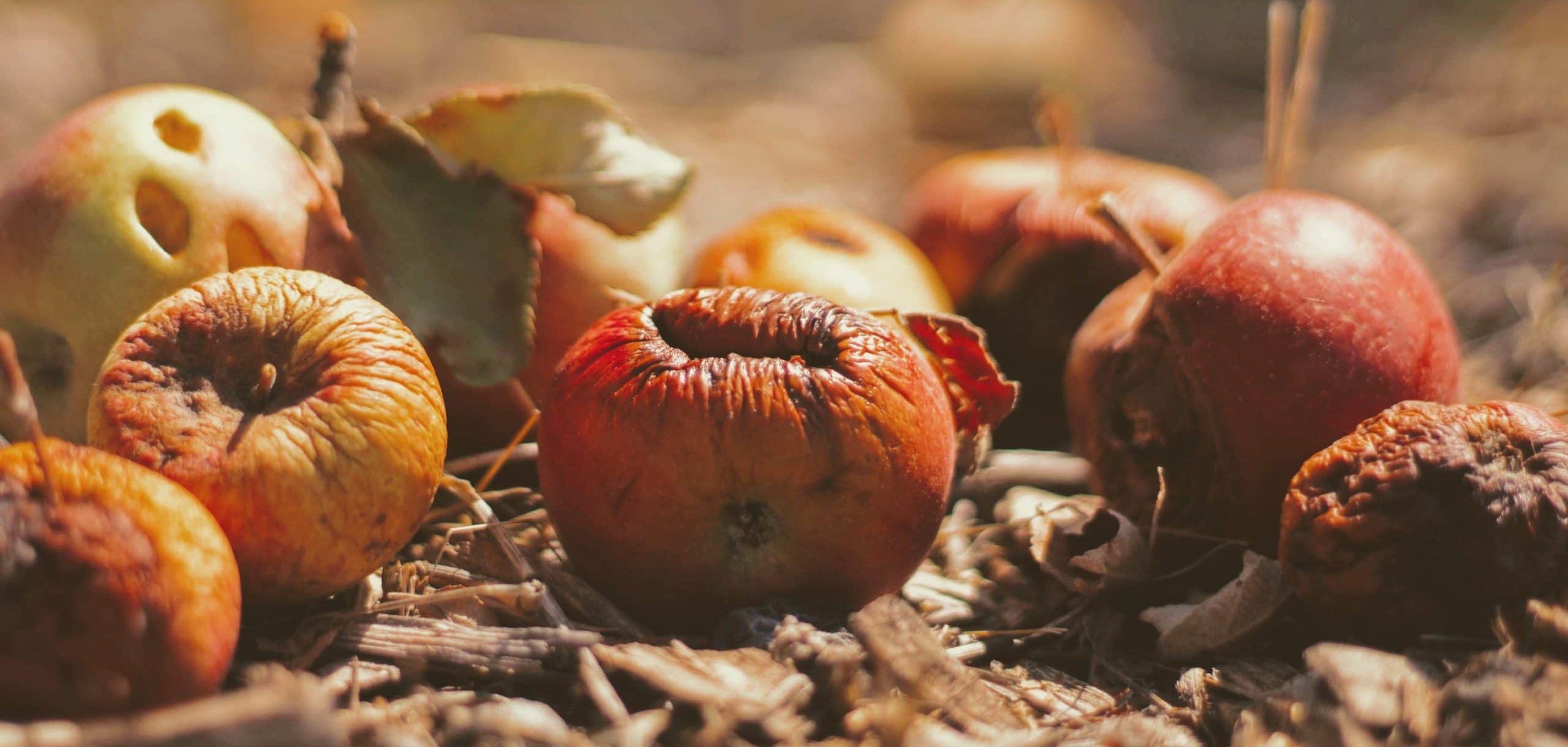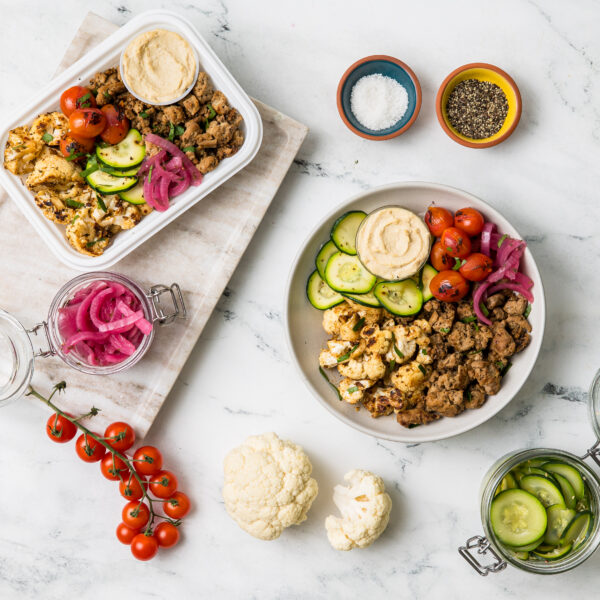We have all been there – you open your fridge, and at the bottom of your vegetable drawer you see the uneaten, wilted, slightly molding broccoli stalks, lettuce, and other vegetables you had every intention of eating this week. Now, you have to toss these veggie friends in the trash and essentially throw out your hard-earned money along with them.
Over time, uneaten food waste can add up. On average, a U.S. household wastes about 76 billion pounds of food per year. That comes out as a cost of $1800 per year per person, meaning each individual will waste about 21% of the food they buy.
And there’s an environmental cost too, especially if you’re throwing that wasted food in the trash rather than composting it. Here are a few facts taken from Dr. Mark Hyman’s masterful book, Food Fix:
- When wasted food sits in the landfill, it undergoes anaerobic decomposition and generates methane gas – a powerful greenhouse gas (GHG).
- Under the current system, the food we waste is responsible for roughly 8% of global emissions
- If food waste were a country, it would be the third-largest emitter of GHGs after the United States and China
Not to mention the pesticides and water that it takes to grow the food we waste. To grow all the food we waste around the world (about 1.6 billion pounds’ worth!), it would take the entire landmass of China. It costs us money, too, to the tune of about $2.6 trillion a year.
With Earth Day just last week, what can you do to help reduce your food waste and lower those numbers? We have 5 easy tips you can start reducing your food waste in your kitchen right now.
Make a Grocery Shopping List
When you purchase food at the grocery store and your local farmers’ market, it’s important to have a plan in place. What meals do you want to cook this week? How much of it do you need? By creating a plan when you grocery shop, you will avoid making unnecessary food purchases and save your money in the long run. Win-Win!
Eat leftovers
When preparing for your grocery shopping trip and planning for your meals each week, many people chose to cook 1-2 batches of meals and eat leftovers the following days after storing them in the freezer or fridge. Eating leftovers can help reduce waste from individual meals and lengthen the life of the meal once cooked. Portion out your dinner into lunch size meals for the next day, store in clear containers at the front of your fridge, so they stay top of mind (and stomach).
Store your food properly
Did you know that not all fruits and vegetables need to be refrigerated? Some vegetables will even cause others to ripen faster if they are stored together. Certain fruits and vegetables will do better in different temperatures, and by storing them properly, you will be able to enjoy your produce over a longer period of time.
A great example is tomatoes – when tomatoes are stored in the fridge vs. on the counter they will typically lose their flavor and can have a more mealy texture. Tomatoes will stay juicer and taste better if you leave them on your countertop or in your pantry.
Another great example is mushrooms: mushrooms will do better in the fridge in a brown paper bag (it’s why there is a brown paper bag option near the mushroom section of your grocery store or farmers market). If you buy your mushroom in plastic wrap, remove the plastic wrap before putting them in the fridge; otherwise they will become slimy after a few days.
Most fruits or vegetables can go either way on the fridge vs. countertop debate. However, they won’t ripen in the refrigerator as quickly, so I’d recommend storing them on the counter until they are ripe. After they have ripened, place them in your fridge to lengthen their life a few extra days and enjoy. These include the following fruits and vegetables:
- Corn
- Apricots
- Avocados
- Figs
- Honeydew Melon
- Kiwi
- Mangoes
- Papayas
- Peaches
- Pears
- Nectarines
- Plums
Fruits & Vegetables to Store in the Fridge
In general, these fruits and veggies will stay fresh and last longer if you keep them in the fridge.
- Asparagus
- Beets
- Bok Choy
- Broccoli
- Brussels Sprouts
- Cabbage
- Carrots
- Cauliflower
- Celery
- Cucumbers
- Eggplant
- Fennel
- Greens
- Leeks
- Mushrooms
- Okra
- Peas
- PeppersRoot Vegetables (Turnips, Rutabagas, Parsnips)
- Spinach
- Summer Squash/Zucchini
- Apples, Berries
- Cherries
- Cranberries
- Grapefruit
- Grapes
- Lemons/Limes
- Oranges
- Pineapple
- Rhubarb
- Watermelon
Fruits & Vegetables to Store at Room Temperature
These are the fruits and vegetables you should store at room temperature on the counter or pantry.
- Onions
- Potatoes
- Winter Squash (like Butternut and Acorn)
- Sweet Potatoes
- Tomatoes
- Bananas
- Persimmons
Don’t forget – no matter where you store them, be sure to wash your fruits and veggies thoroughly before eating, and it’s always a good idea to keep them stored separately.
Organize your fridge: First In, First Out Produce
Keeping your kitchen organized can help you keep track of what you have at home and see the foods that are ready to eat. The concept of FIFO, “first-in, first-out,” is a helpful way to organize food at home. Many grocery stores and restaurants use this system to reduce food waste as well.
When you place newly bought food at the back of the fridge, this will help others use the food in the front row and to help with reducing food waste.
Try out picking, canning, or other food preservation methods
Let’s say that you bought an overabundance of delicious fruits and vegetables, and you’re wondering what to do – safely preserving food at home is a great option to extend the life of food and add unique flavors/textures to our meals. Food preserving methods include canning, pickling, fermenting, dehydrating, and even freezing.
My favorite food preserving methods include making fruits jams, pickling or fermenting vegetables, and dehydrating fruits for an easy-to-go trail mix. An added benefit to making fermented foods is that they are incredibly good for your overall gut health – another win-win to avoiding food waste!
Using any of these tips brings you one step closer to reducing food waste in your home, minimizing your overall environmental impact, and saves you money in the long run. If you’re on the go, however, with little time to cook for yourself then consider buying ready-made food products with environmentally friendly packaging and remember to recycle. This way you can enjoy a delicious, well-portioned meal with little to no waste!





Leave a Reply
No Comments